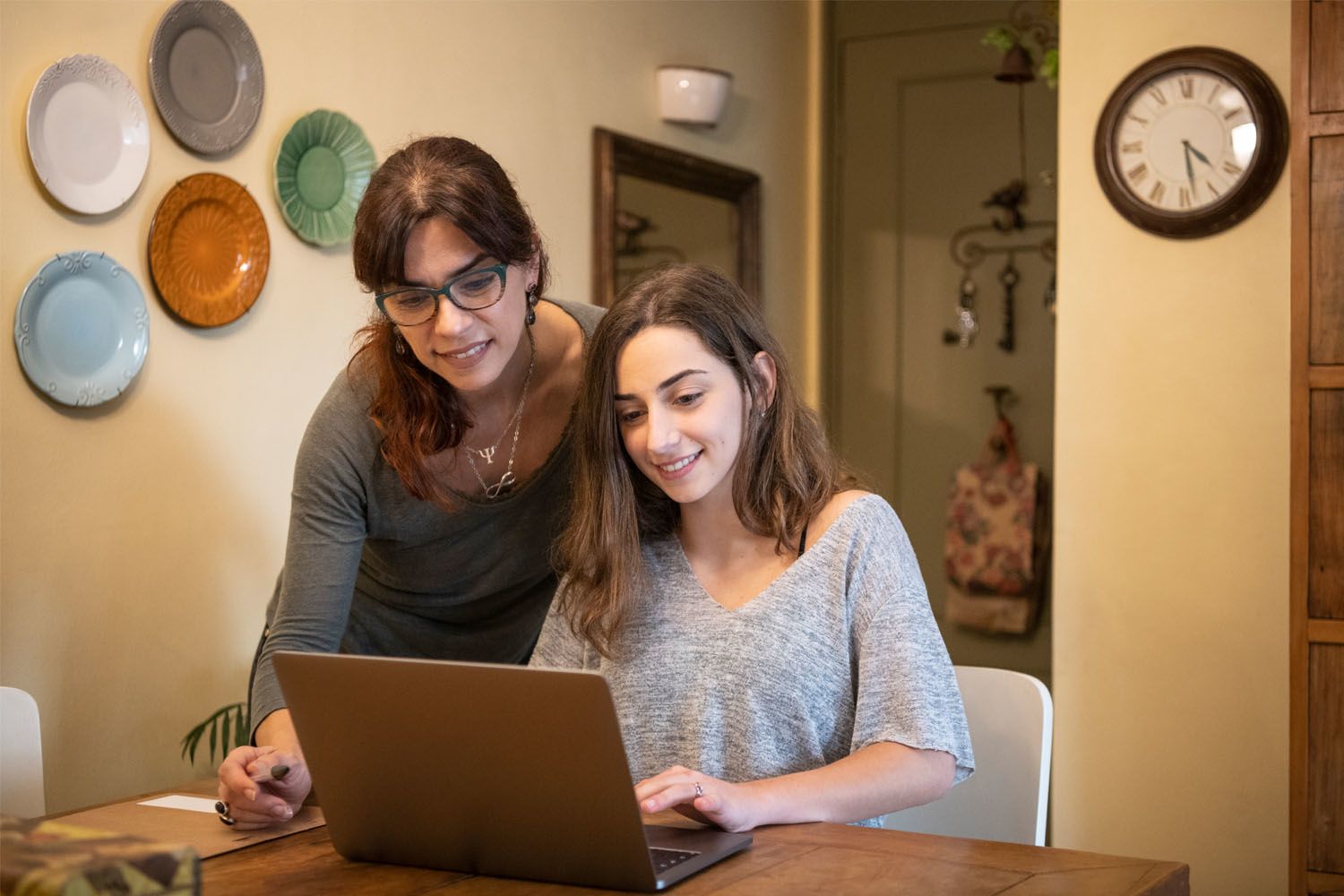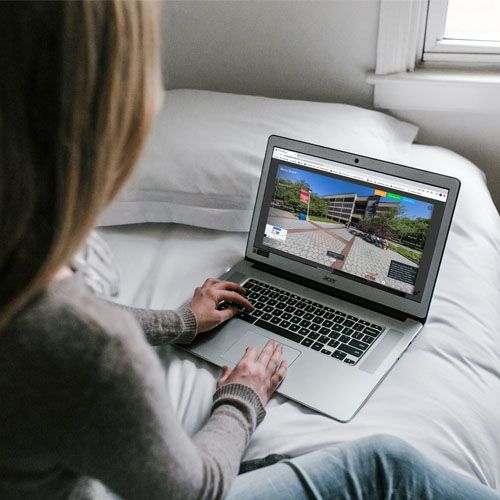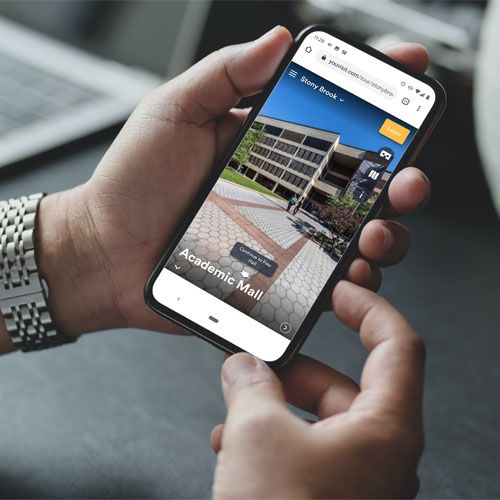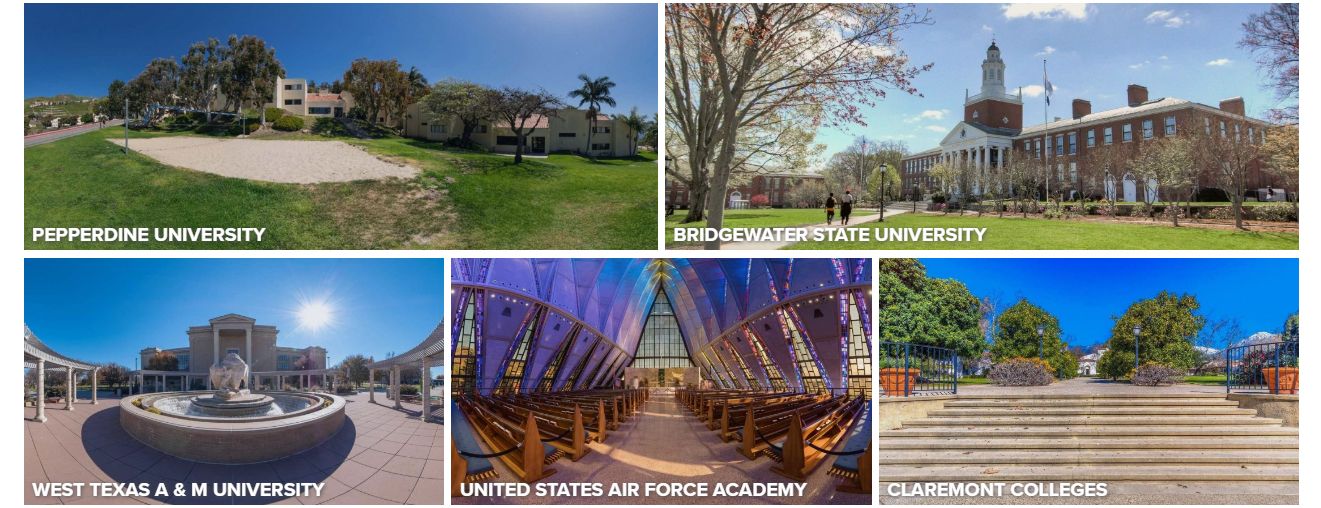Making the class of 2020, and beyond, with virtual tours

Now is the ideal time for colleges to host high school seniors and juniors for campus tours. Seniors are deciding where to go in the fall—and, more urgently, where to put down a deposit—and juniors are starting to think about life after high school.
Sadly, COVID-19 has shuttered campuses, effectively eliminating one of the most important recruitment tools a school has to offer, a campus visit, right in the middle of the most important recruiting period of the year.
To fill that void, more now than ever, students and schools are turning to virtual tours. Recent EAB analysis shows a significant increase in the number of people visiting and interacting with virtual campus tours. Over 350 percent more people visited the YouVisit college search page in March 2020 than in March 2019. In March, more than 1.4 million people took a YouVisit virtual tour.
The data also offers more insight into who is taking virtual tours. The largest increases have been with high school juniors (272 percent), followed by seniors (235 percent) and sophomores (224 percent). This suggests that future classes are already using virtual visits as an important tool in narrowing down and making their choices.
“These virtual experiences encourage exploration through immersive and interactive content. Done right, virtual tours go beyond simply showing pictures of buildings and students; they help replicate the experience and culture of a particular campus, helping prospective students imagine what it would be like to attend that school.”
A truly interactive tour immerses a student in a campus by allowing them to experience key components of student life, such as sitting in on a class, entering a dorm room, hearing from other students, exploring facilities, meeting faculty and staff, and even going beyond campus to understand what it would be like to live in a certain part of the country.
Creating this kind of immersive experience requires a sophisticated platform that not only leverages 360-degree photos but also integrates interactive elements like conversational engagement forms so students can express interest directly while on the tour.
“If you compare spring 2019 to spring 2020, we have seen a 114% increase in people sharing their contact information and interests with the schools during their virtual tour. That is huge when you consider the difference between spring 2018 and spring 2019 was only 6%,” said Marett.


In December 2019, EAB acquired YouVisit, the leader in virtual tours with a goal of helping its partners create a differentiated digital experience during the recruitment and yield seasons. Because of COVID-19, virtual tours are more important than ever, but many schools are wondering if it is possible to implement one given campus shutdowns.
“While travel is suspended, we are offering schools the ability to create tours using content they already have. This includes photos, videos, and 360-degree photos, if institutions have them,” said Emily Bauer, vice president at EAB. “We can get a tour up and online in 3-5 weeks, so now is the time to act in order to achieve 2020 enrollment goals.”

Given yield season, many schools are using virtual tours to recreate key campus visits by hosting “virtual visit days.” Using remote conference platforms, student ambassadors guide prospective students and parents through a tour while fielding questions. Faculty members also join in, sharing information on their areas of academic focus, while admissions teams handle enrollment questions.
“Virtual tours are a powerful tool schools can use right now to achieve their enrollment goals in the face of intense adversity. We know that many students need to experience the campus and culture of a school in order to make a final decision, and we are happy to be able to provide schools with a digital storytelling platform to help make this possible despite the circumstances,” said Marett.
Though much is uncertain and unknown right now, one thing that is clear is that students are choosing to explore campuses through virtual tours.


